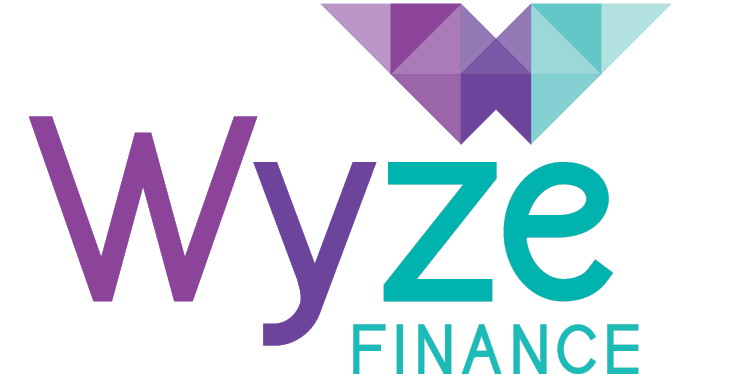
Well another Federal Budget done and dusted! Here’s a bit of a summary on some points that have lending implications for individuals and small business. I have covered key topics of housing affordability, investment property, small business and Self-Managed Super Funds.
Housing affordability
Whilst the Federal Budget released on the 8th May did deliver benefits for prospective home buyers, it didn’t really deliver many big-ticket items to improve housing affordability in the short term.
The key measures proposed in the Federal Budget to increase housing affordability were:
* First Home Super Saving Scheme
* Concessions for people over 65 downsizing their home
* Tougher rules on foreign investment property
First Home Super Savings Scheme
This scheme allows first home buyers to contribute their savings from their before-tax income into their superannuation fund, and be taxed at the 15% superannuation tax rate instead of the marginal tax rate. When these funds (including interest earnt) are withdrawn to purchase a home they will be taxed at the marginal rate less a 30% tax offset.
Contributions would be limited to $30,000 per person and up to $15,000 per year. This would equate to $60,000 per couple.
Whilst this scheme is a step in the right direction for first home buyers the benefits would depend on the individual level of income and tax rate they are paying on that income. The important thing to remember is the benefit is in the amount of tax you are saving by putting the money into your superannuation. Below is an example provided by the government in their budget fact sheet 1.4
“Boosting Michelle and Nick’s first home deposit
Michelle earns $60,000 a year and wants to buy her first home. Using salary sacrifice, she annually directs $10,000 of pre-tax income into her superannuation account, increasing her balance by $8,500 after the contributions tax has been paid by her fund. After three years, she is able to withdraw $27,380 of contributions and deemed earnings on those contributions. Her withdrawal is taxed at her marginal rate (including Medicare levy) less a 30 per cent offset. After paying $1,620 of withdrawal tax she has $25,760 that she can use for her deposit. Michelle has saved around $6,240 more for a deposit than if she had saved in a standard deposit account. Michelle’s partner Nick has the same income and also salary sacrifices $10,000 annually to superannuation over the same period. Together they have $51,520 that they can put towards a deposit, $12,480 more than if they had saved in a standard deposit account.” The case study is for illustrative purposes only and does not constitute any recommendation or advice.
To assist home buyers the government has also provided a calculator estimating the potential benefit of the First Home Super Saving Scheme.
The government is promoting this scheme on the basis that most home savers would be able to increase their savings by 30%.
Before implementing this strategy for your savings towards your first home it is important to remember the following:
1. The money can only be withdrawn from your superannuation to purchase your first home.
2. If you are purchasing your first home with someone who is NOT a first home buyer there is potential you may not be able to access your savings. This money could be locked away in your super until you turn 60. Hopefully the government will set some guidelines regarding this as it does not appear to have been covered yet.
Whilst this scheme does help first home buyers to save their deposit it doesn’t have any immediate benefit. However, it is a start and hopefully we will see further assistance provided in the future from the State Government with greater reductions in the stamp duty payable on home purchases for all first home buyers irrespective of the purchase price.
At Wyze Finance we have the knowledge, experience and expertise to find the most suitable home loan for first home buyers. We have information regarding eligibility for both stamp duty concessions and First Home Owner Grant schemes across Australia.
Concessions for people over 65 downsizing their home
This is part of a move to assist people over the age of 65 to downsize, and, also to free up property across the country for young families to purchase.
The federal budget plans to allow people over the age of 65 to make non-concessional contributions into superannuation of up to $300,000 from the proceeds of selling their principal address. Couples over 65 with joint property ownership can make a $600,000 contribution.
How is this a positive for home buyers? There will be more properties available to purchase which in turn could help to stabilise property prices. A benefit to over 65’s is it could now become financially feasible to sell their large family home to downsize.
Tougher rules on foreign investment property
The Government is re-introducing the 50% cap of foreign ownership in new developments, this means that developers must not sell more than 50% of new developments to foreign investors.
To discourage foreign investors from buying residential property and leaving it vacant, the government will charge an annual levy of $5,000 if the property is not occupied or available to rent for at least 6 months of the year.
There will no longer be a capital gains tax exemption for primary residences of foreign and temporary tax residents.
These measures on foreign investors will ensure that Australian buyers have access to a greater pool of homes and which will help to reduce the excessive escalation of property prices.
Implications for Australian Property Investors
The government has made only minimal changes to negative gearing.
Firstly, deductions for travel expenses related to inspecting, maintaining or collecting rent for a residential rental property will be disallowed.
Secondly, plant and equipment depreciation deductions will be limited to outlays incurred by investors in residential real estate properties from 9 May 2017. This means
* new owners of a property will be unable to claim deductions for plant and equipment purchased by a previous owner of that property
* acquisitions of existing plant and equipment will be reflected in the cost base for CGT purposes for subsequent investors
These changes won’t have too much of an impact on investors in the market and most likely won’t deter potential investors from purchasing an investment property.
The government is establishing a $1 billion National Housing Infrastructure Facility to encourage private investment in affordable rental accommodation for low to moderate income households.
Private investors will be encouraged to invest in new and affordable housing. The CGT discount for Australian resident individuals, investing in qualifying affordable housing will be increased from 50% to 60% from 1 January 2018 if they hold the investment for a minimum of 3 years. This is an additional incentive for investors to build affordable rental accommodation so that people of all incomes can afford to live closer to their work in capital cities and major regional cities.
It is not expected that any of these federal budget policies will have any significant impact on lending products for investment loans. There has already been a great deal of movement in both interest rate and credit policy for investment loans, these changes are mainly due to APRA regulatory restrictions on lenders and the percentage of their loan book for investment and interest only loans.
At Wyze Finance we have access to hundreds of loan products for investment loans and can find the most suitable investment loan for your circumstances.
Implications for Small Business
The government really didn’t deliver anything new to help small business in this budget. The only real benefit is the extension of the instant tax write-off for assets purchased costing less than $20,000.
At Wyze Finance we can arrange Asset Finance for your business to take advantage of this tax benefit. Items that you may be considering are:
* Work vehicles – motor vehicles, utes, trucks etc.
* Plant and equipment
Implications for Self-Managed Super Funds
A significant change is that borrowings under Self-Managed Super Funds will be counted toward the $1.6 million contribution cap. In the past net assets counted towards the cap amount, adding the loan amount to this could take some SMSFs above the cap limit. This is a problem for many if they are relying on super contributions to make the loan repayments. Those pushed over the $1.6 million cap will after July 1 no longer be able to make after-tax super contributions.
This change could have a significant impact on SMSF Lending. If you have a SMSF and need advice regarding this, your Financial Planner is the first point of contact. Once you have your Financial Planners advice Wyze Finance can assist in finding the most suitable SMSF loan for you.
For further insight contact us at Wyze Finance and we can talk with you about all your lending options.

